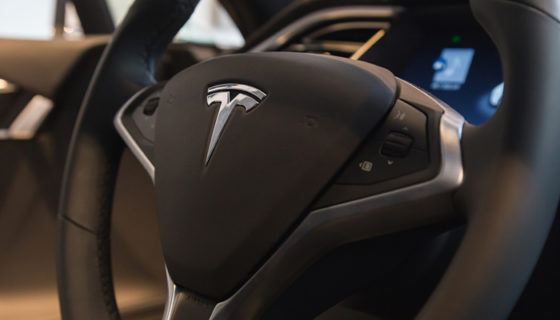Here is a wake-up call about traditional media: Bad news sells, but good news does not. The so-called negativity bias that surrounds us on a daily basis plays a major part in our often cynical view of the future.
As humans, we have been hardwired to respond quickly to negative words or potential threats. The introduction of 24-hour news channels with rolling stories of misery to keep viewers watching can take its toll on even the most positive individual. Some publications and networks actively use uncertainty, fear and misinformation as secret ingredients to success. But when it comes to technology, why does fear spread faster than facts?
In the US, nearly 33,000 people are tragically killed in car crashes every year. Globally, this figure is close to one million. How many of these deaths could be attributed to human error? Earlier this year, Tesla Motors revealed that one of its self-driving cars, operating in assisted driving mode, had crashed, killing its driver. The finger of blame was quickly pointed at Tesla and its technology.
After a handful of other crashes, most media outlets concentrated on the imminent failure of having an autopilot feature and questioned the future of autonomous vehicles. Whether a Tesla driver appeared to be watching a Harry Potter movie on a portable DVD player, as some news stories suggested, or not, having his hands away from the wheel or even having the autopilot feature turned on at all seemed to be irrelevant in the eyes of reporters.
Who or what was responsible for this isolated incident is still under debate. I say “isolated” because there has been only one fatality out of 1.3 million miles driven by Tesla drivers while using autopilot. But these recent stories suggest that it’s people who cannot be trusted to play by the rules in a semi-autonomous car. There is a much stronger argument that many lives throughout the world could be saved by introducing more semi-autonomous vehicles, as well as fully autonomous vehicles that remove the element of human error entirely.
Despite these facts, most headlines read something along the lines of “self-driving car killed its driver.” Any reference to the semi-autonomous car or human error were sadly absent from these stories. It’s much easier to spin a dark tale of a dystopian future ruined by technology than to admit we are more of a danger to ourselves than any machine could be.
Once again I refer to the Skip It Principle I wrote about in my New York Times bestseller Flash Foresight. Basically, the principle says: Take your biggest problem and skip it (because it’s not the real problem anyway). The uncomfortable truth is that driver error is the cause of most traffic deaths, rather than technology.
Rather than investing time and resources into fixing problems with semi-autonomous vehicles, Tesla needs to skip the problem by reminding people why they called it “autopilot” in the first place. When airline pilots decide it’s time to put the passenger jet on autopilot, do the pilot and co-pilot take a break or watch a movie? No, they keep their eyes on the sky ahead and watch the instruments to make sure nothing goes wrong. Autopilot can fly the plane more efficiently than they can, but it cannot do what human pilots do.
The biggest threat to lives on roads across the globe is driver error. This is an undisputable fact, so why is the media so obsessed with painting technology as the villain? Machines have thankfully failed to master the human practices of drunk driving, reckless driving, speeding or road rage. But when was the last time you saw this in a newspaper or on the TV?
The fact that there has been only one fatality at the hands of a semi-autonomous vehicle proves what road we need to take in the future. With over a million people being killed in car crashes each year, why are we so protective of the old way of doing things?
Elon Musk recently announced, “All I will say is full autonomy is going to come a hell of a lot faster than anyone thinks it will. And I think what we’ve got under development is going to blow people’s minds.”
We are living in a digital age of hyper-change. Armed with the information learned in the past month, we know that both semi-autonomous and fully autonomous vehicles are the future. I can confidently say that this Hard Trend is something we should embrace rather than avoid.
It’s time to tune out the white noise and uncertainty that surrounds us. Only by focusing on the data rather than the fear can we truly make progress.








Comments